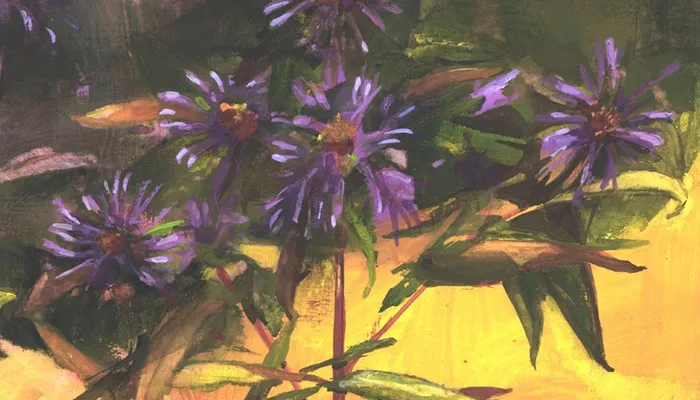New England American-Asters: A Vibrant Autumn Bloom.
Before the trees don their colorful autumn foliage, the rewilded fields around my home come alive with hues of gold and purple. The New England American-aster (Symphyotrichum novae-angliae) begins its bloom in August or September, continuing to brighten the meadows with deep purple flowers well into October. These blooms blend beautifully with the bright yellow of goldenrod flowers.
Formerly known as asters, plants in the Symphyotrichum genus—now commonly referred to as American-asters—boast over 100 species in North America.
On chilly mornings, I often find bumblebees warming themselves on the tightly closed New England American-aster blooms. Despite the frost, these purple flowers tend to open up fully and lushly when the afternoon warmth arrives, showcasing their resilience.
The plants typically grow between 2 to 4 feet tall, though they can reach up to 6 feet. Each flower head features purple ray flowers, which are individual flowers themselves, surrounding yellow disc flowers in the center. The blooms appear in clusters of 100 or more.
These flowers exhibit nyctinasty, a movement responding to changes in light and temperature. This phenomenon is triggered by different light wavelengths. Other flowers, including daisies, morning glories, and tulips, also display nyctinastic movement.
“Nyctinastic movements are part of the plant’s circadian rhythms, utilizing light-sensitive molecules called phytochromes to detect different types of red light and interpret their environment,” explains Arthur Haines, senior research botanist with the Native Plant Trust. “These phytochromes help plants sense the onset of darkness.”
Haines adds that specialized cells in plants absorb water to open and close leaves, petals, and flowers. Charles Darwin suggested that nyctinasty might help flowers avoid frost damage, while another theory posits that it extends the flowering period, thus enhancing pollination and reproduction chances.
In addition to their daily opening and closing, New England American-asters have other defenses against the cold. Their slightly fuzzy leaves and short gland hairs on the stems help protect them. These trichomes, or plant hairs, serve various purposes, such as deterring herbivores and insects, retaining moisture, and shielding the plant from frost.
These asters are highly attractive to native bumblebees, migrating monarch butterflies, and serve as host plants for larvae of various moth and butterfly species, including the pearl crescent.
I particularly enjoy the distinctive aroma of New England American-asters—a blend of citrus and mild spice. Herbalists often note the plant’s benefits for respiratory ailments and its calming effects on the nervous system. As a teenager, I used these fragrant flowers in homemade potpourri and even tried infusing them in oil. However, nothing captures their scent and vibrant color like the sunlight does.
Planted in a former horse pasture, these wildflowers now remind me of my beloved Morgan-cross pony, who passed away at the pandemic’s start. Whenever I see the purple blooms and inhale their scent, I’m transported back to my youth and my enduring love for wildflowers.


